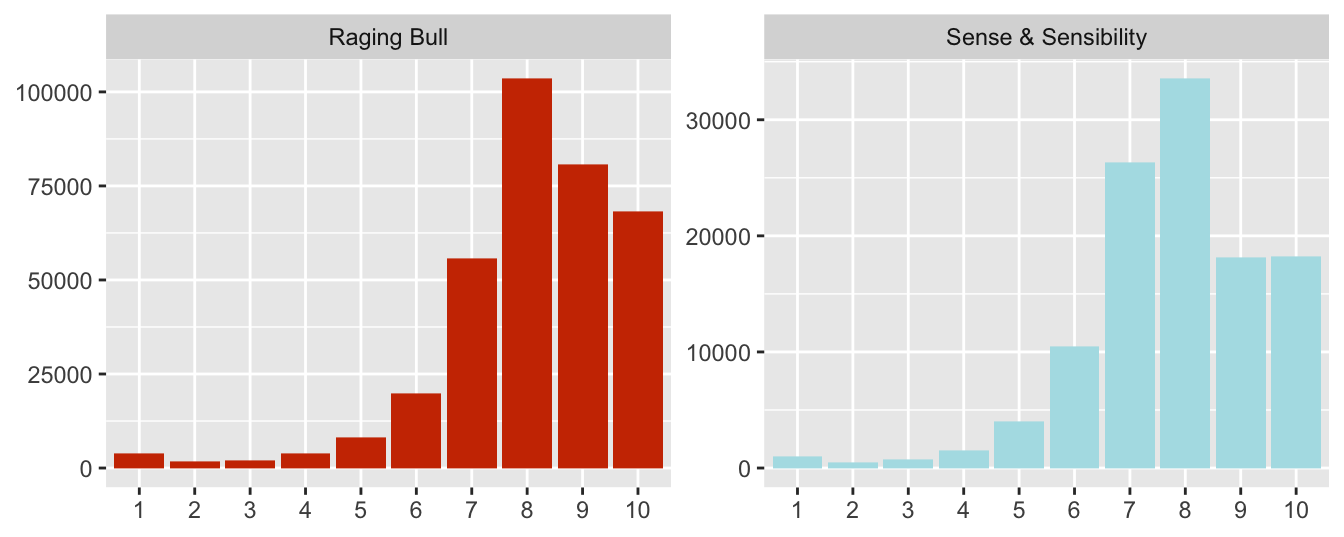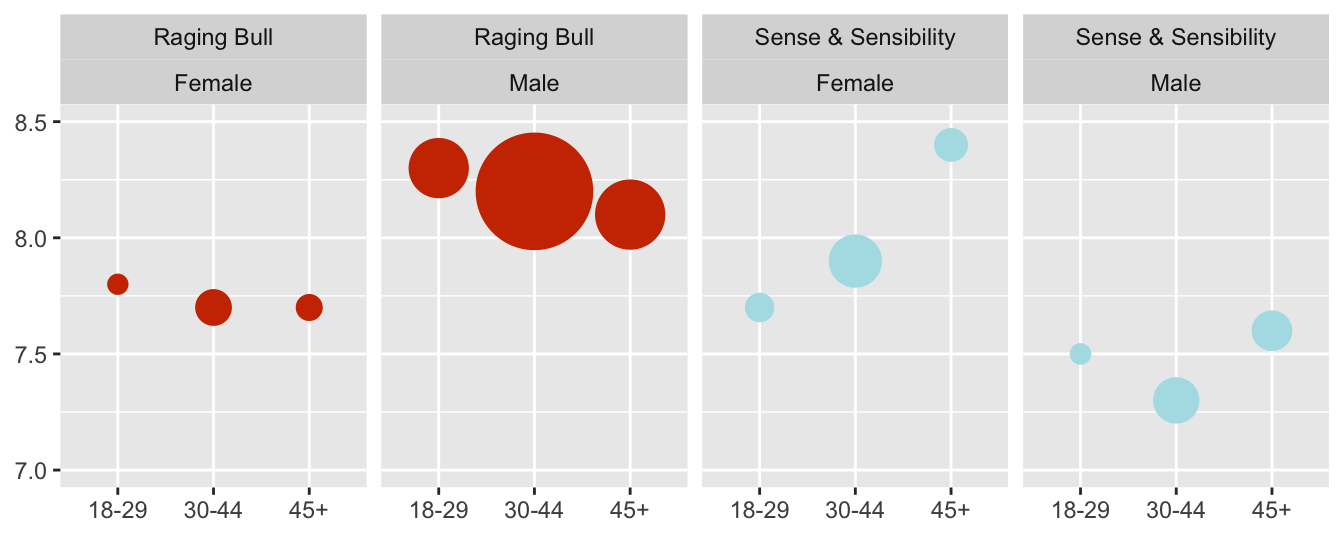3.6 Comparing Raging Bull with Jane Austen
Every IMDb webpage for a film includes a barchart of individual ratings received by a film and average ratings and numbers of votes by sex and four age groups. Around 30% of users do not report their own sex and age. It is not known how reliable the information from the other 70% might be.
Two films were chosen that would have different user responses, “Raging Bull”, the Robert De Niro boxing picture about Jake LaMotta, and “Sense and Sensibility”, the Emma Thompson version of Jane Austen’s novel. Figure 3.14 shows barcharts of the rating distributions. The vertical scales are quite different, as there were around 115,000 ratings of “Sense and Sensibility” and just over three times as many of “Raging Bull”. The patterns are fairly similar, very few poor ratings and the most popular rating being 8 out of 10.

Figure 3.14: User ratings of two films
Only average ratings are available for the demographic groups, but the number of users in each group is given. Of the 348115 who rated Raging Bull, 69.3% reported their sex and the corresponding figure for Sense and Sensibility was 70.2%. Figure 3.15 uses a bubble chart to show the results.

Figure 3.15: Average ratings of two films by user age and sex with point size proportional to number of ratings
Few rating these films reported their age as under 18, so this age group has been left out. A lot more men (around 230,000) than women (about 21,600) rated “Raging Bull” and the men rated the film more highly than the women on average. More women (over 45,000) than men (about 38,800) rated “Sense and Sensibility”. This is unusual on IMDb, as usually more men rate a film. The women rated “Sense and Sensibility” more highly than the men on average.
Answers There are a very few extraordinarily long films, but most are less than 3 hours. Many have rounded runtimes, especially 90 minutes. Runtimes have not changed much over the last 50 years.
Most films get an average rating of between 5 and 7.5 out of 10. Apart from a few films that are relatively rarely rated, the top-rated films have an average of just over 9. Some of the most highly rated films have been rated over 1,000,000 times.
The number of films produced in the last 20 years has increased sharply for most genres, at least for the films in the IMDb database. War films, Westerns, and Musicals have not.
Further questions
How do ratings and numbers of votes change over time? How do ratings vary by age and sex? Are films from different countries rated differently?
Graphical takeaways
- Data heaping is visible in histograms when the binwidth is equal to the data resolution. (Figure 3.2)
- Alpha transparency shows where the data are in scatterplots. (Figure 3.3)
- Faceting emphasises distinctive features of groups. (Figures 3.6 and 3.13)
- Scatterplots can display many different kinds of information. (Figure 3.9)